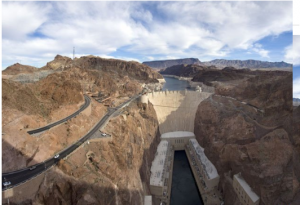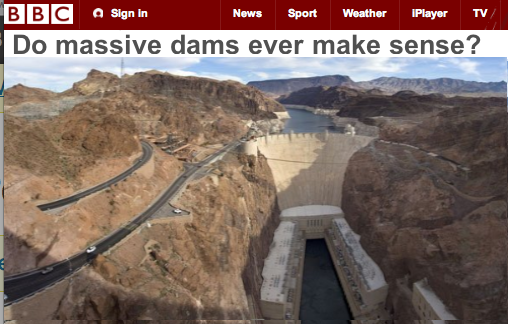
Mega-dams are always promoted as key agents of progress and prosperity by the governments and business interests supporting them.
Taib Mahmud is no exception with his pet project SCORE, which involves building no less than 12 more mega-dams in Sarawak, starting with 5 in the next 12 months.
However, a new study by Britain’s prestigious Oxford University has concluded that these projects are nearly always economically disastrous for the countries involved.
They cost huge sums of money that are rarely made back and they do enormous damage to the economy and the local and world environment in the process.
All this before even considering the pain and misery caused to the communities affected by the flooding and destruction of the rivers concerned.
The spread of what they call “megadams” across developing nations has been fueled by authorities systematically underestimating costs and schedules to guarantee they’ll be approved, they [report writers] wrote. “It’s very hard to find large dams funded by private finance,” Atif Ansar, an associate fellow at the Said Business School at University of Oxford and a co-author of the report, said in a phone interview from Oxford, England. “They’re financed almost entirely by taxpayer money as well as with heavy government borrowing.”[Bloomberg/ Business Week]
This finding by the world famous Said Business School is a slap in the face for Taib. Back in the summer of 2010 the former Chief Minister bankrolled a fancy symposium at the school to boost the credibility of his grandiose economic plans, most of which clearly benefit his own pocket but present little benefit for the people of Sarawak.

On that occasion Taib flew two plane loads of Sarawak officials to Oxford to fill up the conference hall at the Said Business School, at taxpayers’ expense not his own, naturally.
Indeed, although the Said Business School have pointed out that most mega-dams end up as costly white elephants, there is one glaring economic incentive for leaders like Taib.
For a very few, well-positioned people these massive projects present a brilliant opportunity to cream off an enormous slice of the public money passing through these ventures.
Taib himself has already made billions out of Sarawak’s existing dam projects and he stands to make several billions more out of the future dams he has in mind.
For this reason alone mega-dam projects are always adored by greedy dictators.
Once again Sarawak Report is able to say “don’t take it from us”, after all Taib accuses Sarawak Report and numerous NGOs of malicious lies.
Here instead is a report by Britain’s top news organisation the BBC on Oxford University’s assessment of disastrous dams. The issue has also been reported by the US Huffington Post and numerous other international outlets.
![]()
11 March 2014
By Lauren Everitt San Francisco
A new report from researchers at Oxford University argues that large dams are a risky investment – soaring past projected budgets, drowning emerging economies in debt and failing to deliver promised benefits. Do they ever really make sense?
A peek over the edge of the Hoover Dam’s 60-storey wall is enough to send shivers down anyone’s spine. Constructed from enough concrete to pave a motorway from New York to San Francisco – this colossal barrier is touted as a symbol of man’s mastery over nature and a marvel of 20th Century engineering.
The dam was credited with helping jump-start America’s economy after the Great Depression, reining in the flood-prone Colorado River and generating cheap hydroelectric power for arid south-western states. Even more miraculously, the Hoover Dam was completed two years ahead of schedule and roughly $15m (£9m) under budget.
But for megadam critics, the Hoover Dam is an anomaly. The Oxford researchers reviewed 245 large dams – those with a wall height over 15m (49ft) – built between 1934 and 2007. They found that the dams ran 96% over their approved budgets on average – Brazil’s Itaipu dam suffered a 240% overrun – and took an average of 8.2 years to build.
In the vast majority of cases, they say, megadams are not economically viable.
But after a two-decade lull, large dams are once again being trumpeted as a ticket to prosperity. Countries from China to Brazil, via Pakistan and Ethiopia, are rushing to erect them.
With world electricity consumption expected to grow by more than 56% between 2010 and 2040, according to the 2013 International Energy Outlook report, hydropower is a tempting option.
More than 90% of the world’s renewable electricity comes from dams, according to the International Commission on Large Dams.
 Flooded vegetation produces methane
Flooded vegetation produces methaneAndy Hughes of the British Dam Society points to Laos and Vietnam as shining examples of dam-building countries that have harnessed hydropower. “They’re building dams, they’re generating hydropower, and then they export that power to other countries, so it’s a big cash crop for them,” he says.
But Bent Flyvbjerg, principal investigator for the Oxford University dam study, says dams “are not carbon neutral, and they’re not greenhouse neutral”. The vast quantities of concrete required to construct leave an enormous carbon footprint, he says.
Furthermore flooded vegetation under the reservoirs produces methane, a greenhouse gas roughly 20 times more potent than carbon dioxide, he says.
But also, his argument is not with dams as such, but with megadams.
“We don’t accept that it’s a discussion of hydropower from large dams versus fossil fuels. We would like the discussion to be about hydropower from large dams versus hydropower from smaller hydropower projects,” he says.
Others, such as Peter Bosshard of environmental campaign group International Rivers, say climate change threatens to alter weather patterns in unpredictable ways.
“So if you put all your energy eggs in one big dam, you’re taking a big risk because you don’t know what future rainfall patterns will be over time,” he says.
The cost of these behemoths is the main focus of the Oxford study.
Flyvbjerg says he expects the $14.4bn (£8.7bn) price tag for Brazil’s Belo Monte dam to surge to $27.4bn (£16.5bn), outweighing any benefits, and saddling the country with a mountain of debt.
 Ethiopia’s Nile dam could affect the river downstream, in Cairo
Ethiopia’s Nile dam could affect the river downstream, in CairoAt least Brazil’s economy is robust. For many emerging economies, massive dams spell disaster, Flyvbjerg says. Some countries take out large loans – often in foreign currency, making them vulnerable to exchange rate fluctuations – and when dams don’t deliver the promised benefits, these nations take a huge hit.
“It’s like a bull in a china store – these projects are way too big and way too risky to be taken on by the most fragile economies in the world,” he says.
Even when a dam project is overrunning and costs are soaring, governments are reluctant to scrap them he points out.
“A dam is really a useless asset if it’s not completely finished. Even if it’s 99% finished, you can’t use it – it’s either on or it’s not,” Flyvbjerg says.
But Andy Hughes says dams have many upsides. Critics should ask themselves a number of questions, he says: “How else would one generate power, how else would one give people clean water to drink, how else would one irrigate farms, how else would one treat sewage?”
 Work on the Belo Monte dam was suspended by a judge in 2011
Work on the Belo Monte dam was suspended by a judge in 2011And dams create employment. The Belo Monte hydroelectric dam project is projected to create work for an estimated 20,000 people
He says they can play an important role in mitigating climate change. During drought conditions, the reservoirs provide drinking water and irrigation. During wetter periods they’re key for flood protection. In fact, Hughes predicts an upswing in dam building after severe flooding across the UK in the winter just gone by.
Julia Jones, an Oregon State University hydrologist, says this chimes with her study of dams in the Columbia River basin in the Pacific Northwest.
The real benefit of dams may simply boil down to perspective, according to Jones.
“It all depends on who’s at the table,” she says. “There has been a lot of controversy for half a century or more about the larger context in which these projects are constructed – that is, who loses their livelihoods, who gains from the construction of the dam and the environmental benefits and costs.”
For Hughes, it’s more of a damned-if-you-do-damned-if-you-don’t trap.
“My view is that dams can never win. If we build a dam, we get criticised, but once the dam is built people say, ‘Well, what was all the fuss about? Isn’t this a beautiful setting for walking around the lake and picnics?’ But try and demolish a dam, and you get criticized for damaging that beautiful environment. So it’s a no-win exercise, I’m afraid.”
A 19th Century dam disaster
As families slept, the raging torrent smashed into their homes, killing them instantly and washing away all but the faintest traces of scores of buildings.
The body of one victim was reportedly found 18 miles downstream of his home while, in Malin Bridge alone, 102 people were killed, including 11 members of one family.
The forgotten flood that deluged a city
Debatable dams
Belo Monte
- Country: Brazil
- Height of wall: 90m (295ft)
- Cost: $14.4bn (£8.6bn), predicted to rise to $27.4bn (£16.4bn)
- Problem: Judge suspended construction in 2011, on environmental grounds
Three Gorges
- Country: China
- Height of wall: 181m (594ft)
- Cost: $23bn (£13.8bn)
- Problem: Displaced 1.4m people, may have caused landslides
Diamer-Bhasha
- Country: Pakistan
- Height of wall: 272m (892ft)
- Cost (2008): $12.7bn (£7.6bn)
- Experts predict the construction costs may not be recovered
Gigel Gibe III
- Country: Ethiopia
- Height of wall: 243m (797ft)
- Cost: $2.1bn (£1.3bn)
- Expected to disrupt fisheries and the livelihoods of 500,000 inhabitants of the Lower Omo Valley

